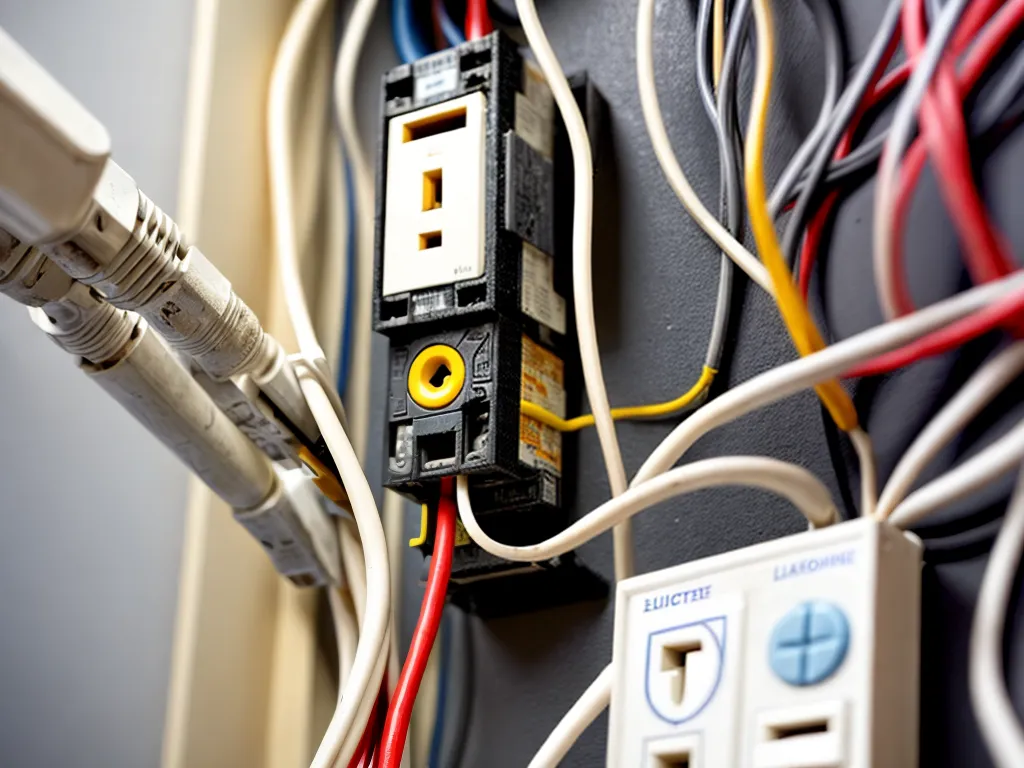
Introduction
Electrical systems in buildings can pose serious safety hazards if not installed properly or maintained regularly. While building codes provide minimum wiring requirements, they often fail to address some critical safety issues that can lead to fires, shocks, and electrocutions. As a homeowner or tenant, it is essential to be aware of these little-known hazards to protect yourself and your family.
Outdated Wiring
Old electrical wiring installed before the 1960s can be a major hazard. These systems were designed for lower wattage appliances and lighting that were common decades ago. Plugging in multiple high-wattage electronics on outdated wiring can overload circuits and cause wires to heat up, ignite insulation, and start fires. Aluminum wiring used before the 1970s is particularly dangerous because it expands and contracts at a different rate than copper wiring, leading to loose connections that spark fires.
Undersized Wires
Thin, undersized wiring is another common problem in older buildings. These wires cannot safely handle the amperage required by large appliances like air conditioners, refrigerators, and stoves. The increased electrical load generates excessive heat in the wires that damages insulation and causes shorts. Upgrading to thicker wires that meet modern electrical demand is essential.
Unprotected Wires
Building codes often do not require protecting electrical wires from physical damage. However, exposed wires with damaged or missing insulation due to age or rodents/pests pose serious shock and fire risks. Using abrasion-resistant conduit and junction boxes to enclose wires adds an extra layer of protection.
Faulty Connections
Loose connections or wire nuts on outlets, switches and junction boxes generate intense heat that can melt plastic components and ignite fires. Solidly joining copper wires with twist-on connectors or solder reduces resistance and ensures safe electrical flow. Wires vibrating against metal junction boxes also need to be secured to prevent shorts.
Overloaded Circuits
Connecting too many appliances and devices on one circuit through split outlets or extension cords can easily overload circuits. Warning signs like frequent tripped breakers, overheating outlets, and flickering lights indicate an overloaded circuit. Redistributing devices over multiple circuits prevents excessive current flow and damage.
Damaged Electrical Panels
The main service panel with circuit breakers can also pose hazards if not securely grounded or if breakers malfunction. Loose or corroded circuit breaker connections can spark fires while faulty breakers fail to trip and overload circuits. Upgrading old fuse boxes to modern arc-fault and ground-fault circuit interrupter (GFCI) breakers adds major protection.
Improper Outdoor Wiring
Outdoor wiring requires waterproof conduits and GFCI outlets to handle exposure to the elements. Unprotected outdoor wires damaged by sunlight, moisture and wildlife quickly short out. Burying direct burial cables or encasing wires in waterproof flexible conduit shields them from the outdoor environment.
Inadequate Grounding
Improperly grounded wiring systems cannot safely dissipate sudden electrical surges. This leads to damaged electronics and potential shock or electrocution risk. All outlets should feature a ground pin that is properly connected via ground wires back to the main panel. Upgrading ungrounded 2-prong outlets to modern 3-prong GFCI outlets is vital.
Presence of Knob and Tube Wiring
Knob and tube wiring was an early electrical system using separated hot and neutral wires poorly insulated with cloth and ceramic knobs. This obsolete wiring is extremely dangerous because insulation breaks down over time, leading to arcing faults and blown fuses. Replacing knob and tube wiring should be an urgent priority due to the risk of property damage or injury.
Warning Signs of Electrical Hazards
Here are key warning signs that may indicate the presence of hazardous electrical conditions:
- Frequent tripping of circuit breakers or blown fuses
- Warm or discolored outlets and switch plates
- Odd burning smells from outlets
- Visible sparks or arcing around outlets
- Tingling sensation when touching appliances
- Unusually high electric bills
- Flickering or dimming lights
- Buzzing or cracking from outlets
Solutions to Reduce Electrical Hazards
Here are some solutions that can minimize electrical hazards in your building:
- Hire an electrician to conduct thorough electrical inspections and upgrades
- Replace outdated wiring, panels, outlets, and switches
- Install GFCI outlets in bathrooms, kitchens, laundry, and outdoors
- Use tamper-resistant outlets around children
- Label circuit breakers and distribute load across circuits
- Keep outlets and junction boxes covered to protect wiring
- Seal outdoor wires and outlets in waterproof conduits
- Ensure proper grounding throughout the electrical system
- Fix loose connections immediately to prevent arcing faults
- Maintain clear space around electrical panels for emergency access
Conclusion
Older electrical systems often lack modern safety provisions required for hazard prevention. Being aware of potential wiring hazards and proactively addressing them through upgrades and repairs can significantly improve electrical safety in your building. Reference this guide anytime you need to evaluate or enhance your electrical system.